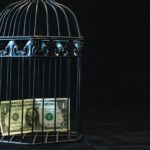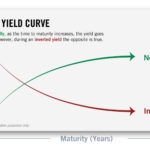The latest unemployment figures show a decline in the US unemployment rate to 3.9%, as nearly 200,000 new private sector jobs were added in December 2021. This meets our criteria, and the Fed’s criteria, too, of “full employment”.
Part of this decline has been from a restoration of many jobs that were lost during the pandemic-driven recession last year, and part of it due to several millions of people leaving the active search for work, due to retirement or other personal circumstances. As such, the Fed must now return its full attentions to managing price stability (aka inflation).
Addressing Inflation
The Federal Reserve helped to save much of the economy from ruin in mid-2020 through the enactment of several rescue and stimulative actions, but a predictable side-effect of these was a huge increase in the M2 and other Money Supplies. With current labor and supply chain constraints, we have the classic setup for inflation, which is simply defined as “too much money chasing too few goods and services”. Advanced Projections’ expectations for the full year 2021 inflation figure to come in at 7%+, and that figure will be officially announced about the middle of this month, January 2022.
The Fed has already announced and then accelerated policy shifts, based upon the financial stability of the recovery, and the levels of unemployment and inflation. These following changes are what investors and the markets should expect and anticipate.
First, an end to asset purchases by the Fed, which should conclude this March. Then, almost immediately, some initial rate increases of 0.25%. At least three, and more likely four such increases will take place this year. If inflation does not begin to moderate, the increases may go to 0.50% late this year, and into 2023. But a restoration of a “normal” interest rate environment, and a quenching of high inflation is a definite goal of the coming 24 months.
Unwinding Fed Balance Sheet
Now, the interesting part of this picture will be when the Fed also begins a process of “unwinding” their balance sheet, of the $8.7T. The two main components of this enormous sum are the US Treasury instruments which they have been purchasing directly, about $4.5T, and the reserves on deposit from member banks, about $4.2T. Both have grown significantly as a consequence of pandemic-related financial programs.
“Unwinding” is the process of reducing these numbers, through the sale of the treasury assets, and a return of the reserves to the banks. The first tends to decrease the money supply directly, and the second has a counteractive effect by putting more money in the hands of banks for loan purposes.
But there is little the Fed can do to force the banks to take back their money, except to perhaps put a cap on how much any bank is allowed to keep in this reserve. The traditional mechanism would be to reduce the rate of interest paid on these reserves, but that would go against the grain of the planned interest rate increases. So the limitation scheme is the only real way forward on that front.
Equities
The decline in money supply that would come about through the asset sales is much more significant and readily recognized in the financial community. In 2018, the Federal Reserve began an unwinding of assets purchased during the Great Recession QE and QE2 processes (QE = Quantitative Easing), and the equities markets responded in nearly panic-like fashion. So much so, that the Fed stopped the unwind prematurely. The M2 actually did not shrink during this effort, but its growth was briefly cut to inflation adjusted levels below 1%. (This was one of our early indicators that a new recession would be on the way within 18-24 months afterwards!)
The unwinding this time, we expect, will be much more aggressive and resolute, as the equities markets have become reliant on voluminous cheap cash with nowhere else to go. Smart money is already anticipating this, yet the proclamations from most investment banks is “stay the course”, claiming that the risks from upcoming Fed moves are already priced in. They are not. The markets are trading at levels nearly double where they should be on a historical basis, and as the Fed moves to restore a normal interest rate and inflation rate environment, equities will rebalance, moving downwards to more sane valuation levels.
Looking Ahead
The timing of those moves is still unclear, and will likely not become more clear until the first one or two of the upward interest rate moves are declared. If the markets begin to show large cracks, it is guaranteed that there will be all kinds of anti-Fed complaints and criticisms raised in the political community. That should be taken as a sign that the Fed is doing the right thing.
Advanced Projections will provide monthly updates to this picture as events unfold in the first half of 2022, through our regular detailed member-only monthly reports, and in our supplementary blogs and videos.






